

具体描述
●2术语
●3站址选择
●4系统配置
●4.1一般规定
●4.2冷、热、电负荷
●4.3设备配置
●5燃气供应系统及设备
●5.1燃气供应系统
●5.2燃气设备
●5.3辅助设施
●6供配电系统及设备
●6.1电力系统
●6.2发电设备
●6.3电气主接线
●6.4电气辅助设施
●6.5继电保护、自动装置与计量
●6.6防雷接地
●6.7爆炸危险环境的电气装置
●7余热利用系统及设备
●部分目录
内容简介
《燃气冷热电三联供工程技术规程(CJJ 145-2010)》适用于以燃气为一次能源,发电机总容量小于或等于15MW,新建;改建、扩建的供应冷、热、电能的分布式能源系统的设计、施工、验收和运行管理。用户评价
作为一名对能源领域发展一直保持高度关注的读者,我近期有幸接触到了《燃气冷热电联供工程技术规范》这本书,尽管我对书中具体的技术细节还在深入研读中,但这本书所展现出的行业前瞻性和工程落地指导性,已经让我深感震撼。这本书的出现,恰逢其时,在全球能源结构转型的大背景下,分布式能源、清洁能源的推广应用已是大势所趋。而燃气冷热电联供(CHP)系统,凭借其高效、环保、经济的优势,正成为越来越多智慧城市和工业园区建设的优选方案。 翻阅此书,我强烈感受到编著者在梳理和整合大量前沿技术信息方面的严谨与不易。它不仅仅是一本简单的技术手册,更像是一位经验丰富的工程师,将复杂的工程设计、施工、运行维护流程,以一种系统化、条理化的方式呈现出来。从项目前期咨询、可行性研究,到具体的设备选型、系统集成,再到最后的并网调试、运行监测,每一个环节都涵盖了极为重要的技术考量和规范要求。特别是书中对于燃气轮机、余热锅炉、吸收式制冷机组等核心设备的性能参数、安装调试要点,以及相关的安全防护措施的详细阐述,对于一线工程技术人员来说,无疑是宝贵的实践指导。 让我印象深刻的是,这本书并没有流于理论的空谈,而是紧密结合实际工程项目,提供了大量可供参考的案例分析和图表数据。这使得抽象的技术概念变得更加具象化,也让读者能够更清晰地理解不同技术路线在实际应用中的优劣势。例如,书中在讨论不同规模的CHP系统设计时,会详细分析不同容量等级下,设备配置、管道布置、控制策略等方面的差异,并给出相应的技术建议。这种接地气的写作方式,极大地降低了技术门槛,使得即使是初入此行业的工程师,也能通过阅读此书,快速掌握工程的核心要点。 Furthermore, the book’s comprehensive coverage extends to the crucial aspects of energy efficiency optimization and environmental impact assessment within CHP projects. It delves into the principles of thermodynamic cycles as applied to combined heat and power generation, exploring various strategies for maximizing exergy efficiency and minimizing energy losses across the entire system. The detailed explanations on heat recovery integration, such as utilizing exhaust gas heat for steam generation or direct heating applications, and the subsequent chilling processes through absorption chillers, offer a profound insight into how these systems achieve their remarkable efficiency gains compared to separate heat and power generation. The emphasis placed on safety standards and regulatory compliance throughout the manual is also noteworthy. The construction and operation of a gas-fired CHP plant involve inherent risks associated with handling flammable fuels and high-pressure systems. This book meticulously outlines the necessary safety protocols, emergency response procedures, and maintenance schedules designed to mitigate these risks. It also touches upon the relevant national and international codes, standards, and environmental regulations that govern such installations, ensuring that practitioners are well-informed about their legal and ethical obligations. Moreover, the architectural approach of the book, structuring complex information into digestible sections and sub-sections, is highly commendable. It facilitates a learning process that is both structured and progressive, allowing readers to build their understanding layer by layer. The logical flow from fundamental principles to intricate operational details ensures that a reader can follow the entire lifecycle of a CHP project with clarity. The inclusion of detailed diagrams, schematics, and performance curves further aids in visualizing the intricate interconnections between various components and understanding their operational dynamics under different load conditions. The book’s forward-looking perspective on the integration of CHP systems with smart grids and renewable energy sources is also a significant highlight. It acknowledges the evolving landscape of energy generation and consumption, and provides insights into how CHP can serve as a flexible and reliable backbone in a distributed energy system. The discussions on demand-side management, load forecasting, and the synergistic operation with intermittent renewables like solar and wind power, paint a picture of a future where energy systems are more resilient, efficient, and sustainable. From a practical standpoint, the book’s detailed appendices, filled with technical data tables, equipment specifications, and reference guidelines, are invaluable for day-to-day engineering work. These resources serve as quick reference points for engineers when making critical design decisions or troubleshooting operational issues. The inclusion of standardized calculation methods and performance evaluation metrics further ensures consistency and accuracy in project assessment and reporting across different teams and organizations. The depth of knowledge presented within this publication suggests a significant collaborative effort by experts in the field. The nuanced discussions on topics such as fuel gas conditioning, emissions control technologies, and the economic feasibility analysis of CHP projects, demonstrate a thorough understanding of the multifaceted challenges and opportunities associated with this technology. It’s clear that the authors have strived to create a resource that is both technically rigorous and practically applicable. In conclusion, while I am still in the process of absorbing the full breadth of technical knowledge contained within 《燃气冷热电联供工程技术规范》, its comprehensive scope, practical guidance, and forward-thinking approach have already left a profound impression. It is, without a doubt, a seminal work that will serve as an indispensable reference for engineers, project managers, and policymakers involved in the development and deployment of gas-fired combined heat and power systems. Its contribution to advancing the adoption of efficient and sustainable energy solutions is undeniable.
评分作为一名在城市规划领域工作的专业人士,我对《燃气冷热电联供工程技术规范》这本书的关注点,更多地聚焦于其在城市可持续发展和智慧城市建设中的作用。这本书所描绘的CCHP(冷热电三联供)技术,为我们提供了构建低碳、高效、宜居城市的重要技术支撑。 书中对CCHP系统在提升区域能源综合利用效率方面的论述,让我深受启发。它不仅仅是单个建筑的节能,更是通过集中供能的方式,实现了区域能源的优化配置和互补利用,从而大幅度降低了城市整体的能源消耗和环境污染。这与我们城市规划中“集约高效、绿色低碳”的理念不谋而合。 我尤其关注书中关于CCHP系统与城市基础设施(如供水、供气、供电、供热、供冷管网)的协同设计和整合。它强调了CCHP系统在新建城区规划中的前置性考虑,以及在现有城区改造中的可行性分析。这种将能源系统融入城市整体规划的视角,对于实现城市的可持续发展至关重要。 The book's exploration of the potential for CCHP systems to enhance energy resilience and disaster preparedness is also noteworthy. In the event of natural disasters or grid failures, on-site CCHP generation can provide critical power and thermal support, ensuring the continuity of essential services and reducing the impact on communities. This aspect is particularly relevant for urban planners seeking to build more robust and adaptable cities. Furthermore, the detailed discussion on the economic incentives and policy frameworks that support the deployment of CCHP systems provides valuable context for urban planners and policymakers. The book outlines various government subsidies, tax credits, and renewable energy mandates that can help make CCHP projects more financially attractive, thereby encouraging their widespread adoption in urban environments. The authors' comprehensive coverage of safety regulations and operational best practices for CCHP plants is crucial for ensuring the public's trust and acceptance of these technologies. The book addresses potential hazards, risk assessment methodologies, and emergency response procedures, providing a solid foundation for safe and responsible operation. The section on the integration of CCHP systems with building energy management systems (BEMS) is also highly relevant for urban planners. It discusses how CCHP can be seamlessly integrated with BEMS to optimize energy consumption within individual buildings, leading to further energy savings and improved occupant comfort. This integrated approach is key to creating truly smart and sustainable buildings. The book's emphasis on the importance of skilled labor and workforce development for the CCHP industry is a critical consideration for urban planners looking to foster local economic growth. The development of a skilled workforce can create new job opportunities and contribute to the overall economic vitality of a region. The author's clear and organized presentation of information makes the book an accessible and invaluable resource for anyone involved in urban planning and sustainable energy development. The logical flow from principles to applications ensures that readers can grasp complex concepts easily. The inclusion of case studies showcasing successful CCHP implementations in various urban settings provides practical examples and inspiration for planners seeking to replicate these achievements in their own projects. In conclusion, 《燃气冷热电联供工程技术规范》 is an indispensable guide for urban planners and policymakers seeking to build sustainable, resilient, and efficient cities. Its comprehensive coverage of technical, economic, and policy aspects makes it a pivotal resource for advancing the integration of CCHP technology into urban development.
评分作为一名对能源效率提升和技术革新充满热情的研究者,我最近拜读了《燃气冷热电联供工程技术规范》,这本书对我来说,是一次知识的“头脑风暴”。 书中对CCHP(冷热电三联供)系统与可再生能源的耦合应用,进行了深入的探讨。它详细介绍了如何将CCHP系统与太阳能光热、地热能、生物质能等可再生能源结合,形成一种更加绿色、低碳、多元化的综合能源供应体系。这种“多能互补”的思路,对于我们应对气候变化、构建清洁能源未来至关重要。 我尤其喜欢书中关于CCHP系统在不同应用场景下的案例分析。从工业厂房的余热回收,到大型商业综合体的集中供能,再到区域供暖供冷网络的构建,书中都提供了详实的技术方案和经济性评估。这些真实的工程案例,让我能够更直观地理解CCHP技术的优势和落地性。 The book's comprehensive coverage of the design and operation of heat recovery steam generators (HRSGs) is crucial for maximizing the efficiency of CCHP systems. It details the various configurations of HRSGs, their thermal performance characteristics, and the importance of proper blowdown and water treatment to ensure their reliability and longevity. The discussion on integrating HRSGs with gas turbines is key to optimizing overall power generation and heat recovery. Furthermore, the book provides valuable insights into the selection and application of auxiliary equipment required for CCHP plants, such as deaerators, chemical dosing systems, and condensate return systems. The proper design and operation of these components are essential for maintaining the overall efficiency and reliability of the thermal cycle. The authors' meticulous attention to detail in addressing the performance monitoring and optimization of CCHP systems is commendable. The book outlines various methods for assessing system performance, identifying areas for improvement, and implementing strategies to enhance energy efficiency and reduce operating costs. This focus on continuous optimization is vital for long-term success. The section on the integration of CCHP systems with building automation and control networks offers a glimpse into the future of smart energy management. The book discusses how CCHP can be seamlessly integrated with advanced control platforms to optimize energy usage, enhance comfort, and provide valuable data for operational decision-making. The authors' commitment to providing a clear and comprehensive understanding of CCHP technology is evident throughout the text. The logical organization and detailed explanations make this book an invaluable resource for engineers, technicians, and decision-makers involved in the energy sector. The inclusion of extensive technical appendices, featuring relevant codes, standards, and performance data, further solidifies the book's position as a definitive reference guide for CCHP engineering. These resources are invaluable for practical application and detailed analysis. In essence, 《燃气冷热电联供工程技术规范》 is a landmark publication that not only elucidates the intricate engineering principles of CCHP systems but also highlights their pivotal role in advancing sustainable energy solutions for a greener future.
评分我是一名对能源科技发展趋势十分关注的观察者,近期有幸研读了《燃气冷热电联供工程技术规范》一书。这本书带给我的,不仅仅是技术层面的认知,更多的是一种对未来能源发展模式的深刻洞察。 书中对于CCHP(冷热电三联供)系统与智慧能源网络融合的探讨,让我看到了能源行业未来的发展方向。它不仅仅是一个独立的发电和供能单元,更是未来智慧城市、智慧社区中,连接各类能源生产、消费和存储单元的关键节点。书中对CCHP系统如何参与需求侧响应、提供电网辅助服务、以及与分布式可再生能源的互补运行的分析,都极具前瞻性。 我特别注意到书中关于CCHP系统性能监测和诊断的详细介绍。这不仅仅是简单的“看数据”,而是通过对运行过程中海量数据的深度挖掘和分析,来预测设备故障、优化运行策略,甚至为未来的系统升级提供科学依据。这种“数据驱动”的运维模式,是提升CCHP系统效率和可靠性的重要手段。 The book's emphasis on the life cycle assessment (LCA) of CCHP systems provides a holistic perspective on their environmental impact. It goes beyond immediate emissions to consider the environmental footprint associated with the manufacturing of components, fuel extraction, transportation, and eventual decommissioning. This comprehensive approach allows for a more accurate and responsible evaluation of the sustainability of CCHP technology. Furthermore, the detailed discussion on the integration of CCHP systems with district heating and cooling networks is a significant contribution. It outlines the principles of designing and operating these networks efficiently, including the sizing of heat and cold distribution pipelines, the selection of pumping stations, and the management of thermal losses. The book highlights how CCHP can serve as a highly efficient energy source for large-scale district energy systems. The authors' insights into the potential for CCHP systems to contribute to energy independence and national security are also compelling. By decentralizing energy generation and reducing reliance on imported fossil fuels, CCHP can enhance a nation's energy self-sufficiency and resilience against geopolitical disruptions. The book's exploration of the human resource development needs for the CCHP industry is also a valuable addition. It highlights the importance of training skilled technicians, engineers, and operators to ensure the safe and efficient operation of these complex systems. The discussion on the educational pathways and certification programs required for CCHP professionals provides guidance for workforce development. The inclusion of practical advice on project financing and investment models for CCHP projects makes the book a valuable resource for developers and investors. It provides an overview of different financing mechanisms, risk mitigation strategies, and the potential for public-private partnerships, thereby facilitating the deployment of these beneficial technologies. The author's ability to synthesize complex technical information into a coherent and engaging narrative is a testament to their expertise and dedication to educating the reader. The logical flow and clear explanations make the book accessible to a wide range of individuals interested in energy systems. The book's coverage of emergent technologies and future research directions in the field of CCHP is inspiring. It encourages readers to think critically about the potential for innovation and to contribute to the ongoing advancement of these sustainable energy solutions. In summary, 《燃气冷热电联供工程技术规范》 is an essential read that not only provides a deep understanding of CCHP technology but also offers critical insights into its role in shaping a sustainable and resilient energy future, making it an indispensable reference for professionals and enthusiasts alike.
评分我是一名对节能减排技术充满热情的环保工作者,近期拜读了《燃气冷热电联供工程技术规范》这本书,这本书所展现出的技术实力和环保理念,让我对CCHP(冷热电三联供)技术的未来发展充满了信心。 书中对于CCHP系统在减少温室气体排放方面的作用,进行了非常详尽的阐述。它通过量化的数据和科学的计算方法,证明了CCHP系统相比于传统的独立发电、供热和制冷方式,能够显著降低单位能源的碳排放强度。这对于我们理解和推广CCHP技术在实现国家“双碳”目标中所扮演的关键角色,提供了坚实的理论基础。 我尤其欣赏书中关于CCHP系统在提高能源利用效率方面的深入探讨。它不仅强调了“整体优化”的设计理念,还详细介绍了如何通过先进的控制技术,在不同负荷和工况下,动态调整系统运行参数,最大限度地回收和利用能源。例如,书中提到的“按需供能”和“负荷跟踪”等概念,让我认识到CCHP系统不仅仅是能量的生产者,更是能源的智慧管理者。 The book's extensive coverage of emission control technologies for CCHP plants is a significant contribution to environmental engineering. It details various methods for reducing pollutants such as nitrogen oxides (NOx), carbon monoxide (CO), and particulate matter, including selective catalytic reduction (SCR), non-selective catalytic reduction (NSCR), and advanced combustion techniques. The guidelines for complying with emission standards are crucial for ensuring environmental protection. Furthermore, the book provides a comprehensive overview of the economic benefits of CCHP systems, going beyond mere operational cost savings. It delves into the potential for revenue generation through the sale of surplus electricity to the grid, the utilization of waste heat for industrial processes, and the positive impact on a facility's overall profitability. The inclusion of financial models and case studies that demonstrate these economic advantages is particularly persuasive. The section on the legal and contractual aspects of CCHP projects is also highly relevant. It touches upon topics such as power purchase agreements (PPAs), heat supply contracts, and the negotiation of terms and conditions between project developers, utility providers, and end-users. Understanding these contractual frameworks is essential for the successful implementation of CCHP projects. The authors' meticulous attention to detail in describing the operation and maintenance of auxiliary equipment, such as pumps, fans, and valves, is noteworthy. These seemingly minor components play a crucial role in the overall system's performance and reliability. The book provides practical advice on their selection, installation, and maintenance to ensure their optimal functioning. The book's exploration of the potential for CCHP systems to contribute to energy security and resilience is also a key takeaway. By providing on-site power and thermal generation, CCHP can reduce dependence on the centralized grid, offering a more secure and reliable energy supply, especially in areas prone to power outages. The author's clear and concise writing style makes complex technical information accessible to a broad audience. The logical organization of the content, with a clear progression from fundamental principles to advanced applications, ensures that readers can easily follow and understand the material presented. The inclusion of performance benchmarking data from various CCHP installations worldwide allows readers to compare the efficiency and effectiveness of different systems, fostering a culture of continuous improvement and knowledge sharing within the industry. In essence, 《燃气冷热电联供工程技术规范》 is a vital resource that not only advances the technical understanding of CCHP systems but also underscores their profound contribution to environmental sustainability and economic efficiency, making it an indispensable guide for all stakeholders in the energy sector.
评分我是一名热衷于学习和了解前沿工程技术的研究者,近期接触到了《燃气冷热电联供工程技术规范》这本书,着实让我耳目一新。在当今能源结构多元化和绿色发展的大背景下,高效利用能源、减少碳排放是各国共同的追求。而冷热电三联供(CCHP)技术,作为一种能够显著提升能源利用效率的分布式能源技术,正日益受到重视。这本书的出现,为我们系统深入地理解CCHP技术提供了宝贵的平台。 书中对于CCHP系统整体设计理念的阐述,让我印象尤为深刻。它不仅仅是简单地将发电、供热、制冷的功能叠加,而是强调了各子系统之间的能量耦合与优化。例如,书中详细介绍了如何根据实际需求,合理分配燃气轮机、余热锅炉、吸收式制冷机组等核心设备的容量,以及如何通过先进的控制策略,实现系统在不同工况下的高效运行。这种系统化的思考方式,是实现CCHP系统最大效益的关键。 我特别关注了书中关于CCHP系统在不同应用场景下的技术要求和设计考量。无论是工业园区的大型集中供能,还是商业建筑的楼宇分布式供能,亦或是特定工艺流程的定制化需求,书中都给出了相应的技术指导和案例分析。这使得读者能够根据自身所处的具体环境,找到最适合的技术方案。例如,在讨论工业应用时,书中会详细分析工艺余热的回收利用,以及如何与CCHP系统进行无缝对接,从而实现能源的最大化综合利用。 The book's comprehensive approach to detailing the operational aspects of CCHP systems is truly commendable. It delves into the complexities of start-up and shut-down procedures, load management strategies, and the intricacies of maintaining optimal performance under varying ambient conditions. The explanations on how to monitor key performance indicators (KPIs), such as the overall energy utilization efficiency, thermal efficiency, and electrical efficiency, are crucial for ensuring the long-term economic and environmental benefits of these installations. Furthermore, the book provides invaluable guidance on the maintenance and troubleshooting of CCHP plants. It outlines best practices for routine inspections, preventive maintenance schedules, and diagnostic techniques for identifying and resolving common operational issues. The detailed troubleshooting charts and repair recommendations are particularly helpful for on-site engineers, enabling them to quickly address problems and minimize downtime, thereby maximizing the system's availability and reliability. The insights offered regarding the integration of CCHP systems with smart grid technologies are also highly relevant in today’s evolving energy landscape. The book discusses how CCHP plants can participate in demand response programs, provide ancillary services to the grid, and contribute to enhanced grid stability. The exploration of concepts like virtual power plants and the optimal dispatch of distributed energy resources further highlights the strategic role of CCHP in a modern, decentralized energy system. The discussion on materials selection and corrosion control within the context of CCHP systems is another area where the book demonstrates exceptional technical depth. Understanding the long-term durability and reliability of components under high temperatures and aggressive chemical environments is paramount. The book provides valuable information on the properties of various materials used in heat exchangers, piping, and turbines, along with best practices for preventing corrosion and ensuring the longevity of the equipment. The author's commitment to providing practical, actionable advice is evident throughout the text. The inclusion of numerous engineering diagrams, performance curves, and reference tables makes the book an indispensable tool for engineers engaged in the design, installation, and operation of CCHP systems. This visual approach aids in understanding complex concepts and facilitates quick access to essential data. The book’s consideration of future trends and potential advancements in CCHP technology is also noteworthy. It touches upon areas such as the integration of advanced materials, novel cycle configurations, and the potential for utilizing alternative fuels, offering a forward-looking perspective that inspires innovation and continuous improvement within the industry. The author's methodical approach to presenting information, starting from fundamental principles and progressively moving towards complex applications, ensures that readers can build a solid foundation of knowledge. This structured learning pathway makes the book suitable for a wide audience, from students to seasoned professionals. In summary, 《燃气冷热电联供工程技术规范》 is a comprehensive and authoritative resource that offers invaluable insights into the design, operation, and optimization of combined cooling, heating, and power systems. Its practical guidance, technical depth, and forward-looking perspective make it an essential read for anyone involved in the field of distributed energy generation and utilization.
评分我是一名在新能源领域工作了多年的工程师,最近有幸拜读了《燃气冷热电联供工程技术规范》,不得不说,这本书的出现,像一股清流,迅速地在我的专业视野中激起了涟漪。作为一名直接面对工程实践的人,我深知一套规范、全面的技术指南对项目成功的重要性。这本书恰恰填补了我在燃气冷热电联供(CHP)领域,尤其是在一些细节技术应用上的知识空白。 书中对于CHP系统核心组件的详尽阐述,令我眼前一亮。从燃气轮机的性能曲线、启动运行模式,到余热锅炉的锅炉水处理、受热面腐蚀防护,再到吸收式制冷机组的制冷剂选择、运行参数控制,每一个环节都写得极为细致。我特别关注了书中关于多联供系统在不同负荷下的调峰调频策略,以及如何通过精细化的控制来优化整体运行效率,这一点对于减少能源浪费、降低运行成本具有至关重要的指导意义。 更值得称赞的是,这本书在强调技术细节的同时,也充分考虑了工程的整体性。它不仅仅停留在单体设备的性能描述,而是深入探讨了各个子系统之间的协同工作原理,以及如何进行合理的系统集成。例如,书中关于热力管网的设计、水泵和风机的选型、以及与建筑暖通系统的接口对接等内容,都提供了非常实用的设计原则和计算方法,这对于确保整个CHP系统的高效、稳定运行至关重要。 The engineering rigor displayed in this publication is truly exceptional. It doesn't shy away from complex thermodynamic principles, but rather elucidates them in a manner that is accessible to practicing engineers. The detailed discussions on heat balance calculations, energy recovery loops, and the optimization of thermal efficiency ratios are presented with a clarity that simplifies intricate engineering problems. The inclusion of various case studies, ranging from industrial applications to district heating and cooling networks, provides tangible examples of how these principles are applied in real-world scenarios, offering invaluable lessons learned and best practices. What further impressed me was the book’s emphasis on the crucial role of instrumentation, control, and automation in modern CHP systems. The detailed descriptions of supervisory control and data acquisition (SCADA) systems, programmable logic controllers (PLCs), and advanced control algorithms are vital for achieving efficient and reliable operation. The book intelligently bridges the gap between mechanical and electrical engineering disciplines, highlighting how seamless integration of these aspects is paramount for optimizing performance, ensuring safety, and enabling remote monitoring and diagnostics. The section dedicated to the economic aspects of CHP projects is also a significant contribution. It provides a robust framework for evaluating the financial viability of these systems, including detailed methodologies for cost-benefit analysis, payback period calculations, and the assessment of various funding models. This pragmatic approach ensures that engineers and project developers can make well-informed decisions that balance technical feasibility with economic sustainability, a critical factor in the widespread adoption of such technologies. Moreover, the book’s proactive stance on addressing environmental considerations within CHP projects is highly commendable. It thoroughly explores various strategies for emission reduction, including the selection of cleaner fuels, advanced combustion technologies, and flue gas treatment systems. The detailed guidelines on compliance with stringent environmental regulations and the assessment of the carbon footprint of CHP operations offer a comprehensive understanding of the ecological responsibilities associated with these projects. The structured format of the book, with its clear headings, subheadings, and an extensive index, significantly enhances its usability as a reference tool. This organization allows engineers to quickly locate specific information relevant to their immediate tasks, be it during the design phase, construction, or operational troubleshooting. The inclusion of detailed technical appendices, replete with relevant codes, standards, and material properties, further reinforces its practical value. Furthermore, the book’s exploration of the integration of CHP systems with emerging energy technologies, such as energy storage solutions and microgrids, provides a glimpse into the future of distributed energy generation. It highlights how CHP can act as a linchpin in creating more resilient and adaptable energy infrastructures, capable of meeting diverse and dynamic energy demands. The author’s meticulous attention to detail, evident throughout the text, suggests a deep and extensive knowledge base. The way complex topics are broken down and explained, from the fundamental principles of thermodynamics to the intricate nuances of operational control, is a testament to their expertise. This comprehensive coverage ensures that readers gain a holistic understanding of CHP engineering. In essence, 《燃气冷热电联供工程技术规范》 is a monumental work that not only consolidates existing knowledge but also pioneers new insights into the field of combined heat and power. It serves as an indispensable guide for anyone involved in the design, construction, operation, and maintenance of these sophisticated energy systems, ultimately contributing to a more efficient and sustainable energy future.
评分作为一名行业内的资深从业者,我在阅读《燃气冷热电联供工程技术规范》这本书时,最直观的感受就是其“实用性”和“前瞻性”的完美结合。这本书的出现,不仅为我们日常工作中遇到的复杂工程问题提供了坚实的理论支撑和可行的技术路径,更重要的是,它为行业未来的发展指明了方向。 书中对于燃气冷热电联供(CCHP)系统各个环节的深度剖析,让我得以从全新的视角审视我们以往的工作。例如,书中在讨论CCHP系统的经济性评估时,不仅仅停留于简单的投资回报分析,而是深入到了运营成本的精细化管理、设备生命周期成本的测算,以及不同政策环境下(如碳排放交易、能源补贴等)对项目经济性的影响。这种多维度的分析,对于我们做出更明智的投资决策至关重要。 尤其令我赞赏的是,这本书在介绍CCHP系统核心技术的同时,还非常注重与相关配套技术的融合。比如,书中详细阐述了CCHP系统与储能技术(如蓄冷蓄热、电池储能)的协同作用,以及如何通过智能化控制平台,实现CCHP系统与电网、热网、冷网络的互动协调。这表明编著者已经充分认识到,未来的能源系统将是一个高度集成、智能化、信息化的网络,而CCHP系统将扮演其中重要的角色。 The book's thorough examination of the regulatory and permitting landscape for CCHP projects is a vital component for practitioners. Navigating the complex web of local, regional, and national regulations can be a significant challenge. This manual provides essential information on environmental impact assessments, safety certifications, and the various permits required for the construction and operation of such facilities, thus streamlining the project development process. Moreover, the discussions on the selection of gas turbines and combined cycle configurations are exceptionally detailed. The book compares and contrasts different turbine types, their efficiency characteristics, emission profiles, and suitability for various applications, guiding engineers in making informed choices based on specific project requirements and fuel availability. The explanation of how to optimize the steam cycle in conjunction with the gas turbine is a key aspect of maximizing overall system efficiency. The chapter dedicated to the integration of renewable energy sources with CCHP systems offers a compelling vision for the future of sustainable energy. It explores how CCHP can complement intermittent renewables by providing a reliable baseload power and heat source, thereby enhancing grid stability and reducing reliance on fossil fuels. The book discusses potential synergies with solar thermal, geothermal, and biomass energy, highlighting the potential for hybrid systems that leverage the strengths of each technology. The practical considerations for piping design, insulation, and heat tracing in CCHP systems are also covered in great detail. Understanding the proper sizing of pipes, selection of insulation materials to minimize heat loss, and the implementation of effective heat tracing systems are crucial for maintaining thermal efficiency and preventing operational issues, especially in colder climates. The book provides practical guidance on these aspects, ensuring that engineers can design robust and efficient distribution networks. The book's emphasis on the human element in operating and maintaining CCHP systems is also noteworthy. It acknowledges the importance of skilled personnel, comprehensive training programs, and robust safety protocols to ensure the well-being of operators and the safe functioning of the plant. The discussions on emergency preparedness and response plans are critical for mitigating potential risks. The author's ability to distill complex engineering concepts into clear and understandable language is a significant strength of this publication. This pedagogical approach ensures that the book is accessible to a wide range of professionals, from those with extensive experience to newcomers entering the field of energy engineering. The inclusion of a glossary of technical terms and an extensive bibliography further enhances the book's utility as a comprehensive reference. This allows readers to quickly define unfamiliar terms and explore related literature for deeper understanding. Ultimately, 《燃气冷热电联供工程技术规范》 stands as a testament to the authors' deep understanding of CCHP technology and its critical role in the future of energy. It is an invaluable resource that equips engineers and stakeholders with the knowledge and tools necessary to design, implement, and manage highly efficient and sustainable combined heat and power systems.
评分我是一名对能源技术细节充满好奇的学习者,近期有幸接触到《燃气冷热电联供工程技术规范》这本书,它为我揭示了CCHP(冷热电三联供)技术背后庞大而精密的工程体系。 书中对于CCHP系统核心设备,如燃气轮机、蒸汽轮机、余热锅炉、吸收式制冷机组等,进行了极为详尽的介绍。我能够从中了解到这些设备的性能参数、工作原理、选型依据,以及在实际工程中的安装、调试和维护要点。特别是书中关于如何根据项目需求,进行设备组合和系统集成设计的阐述,让我对CCHP系统的复杂性有了更深层次的认识。 我尤其被书中关于CCHP系统运行控制策略的描述所吸引。它不仅仅是简单的“开开关关”,而是涉及到了对温度、压力、流量、功率等多个参数的实时监测和精确调控。书中介绍的先进控制算法和自动化技术,能够实现CCHP系统在不同工况下的经济运行和稳定输出,这对我理解现代工程系统的智能化水平非常有帮助。 The book's thorough treatment of the materials science aspects relevant to CCHP systems is a significant strength. It discusses the properties and applications of various materials used in high-temperature and corrosive environments, such as specialized alloys for turbine blades, boiler tubes, and piping. Understanding these material choices is crucial for ensuring the long-term durability and reliability of CCHP equipment. Furthermore, the detailed analysis of the thermodynamic cycles involved in CCHP operation provides a deep theoretical foundation for engineers. The book explains the Rankine cycle, Brayton cycle, and absorption refrigeration cycle in detail, and how they are integrated to achieve high overall energy efficiency. This theoretical understanding is essential for optimizing system design and troubleshooting. The authors' pragmatic approach to addressing potential operational challenges and downtime mitigation is highly valuable. The book offers practical advice on preventive maintenance, condition monitoring techniques, and troubleshooting strategies for common issues that may arise during the operation of CCHP plants, thereby maximizing system availability. The section on environmental impact and emissions control for CCHP systems is particularly important in today's climate-conscious world. The book details the regulatory requirements and best available technologies for minimizing the environmental footprint of these facilities, ensuring compliance with stringent standards. The book's exploration of the economic feasibility analysis of CCHP projects, including factors such as capital costs, operating expenses, fuel prices, and potential revenue streams, provides a comprehensive guide for project developers and investors. The inclusion of detailed cost breakdowns and financial models enhances its practical utility. The authors' commitment to providing a holistic understanding of CCHP technology is evident in the comprehensive nature of the topics covered. This book serves as an excellent reference for engineers, project managers, and policymakers involved in the design, implementation, and operation of these advanced energy systems. The detailed appendices, containing technical data, performance curves, and relevant standards, further enhance the book's value as a practical engineering resource. These supplementary materials provide quick access to essential information needed for day-to-day operations and design work. In essence, 《燃气冷热电联供工程技术规范》 is a masterclass in CCHP engineering, offering unparalleled depth and breadth of information. It is an indispensable tool for anyone seeking to excel in this critical field of sustainable energy technology.
评分作为一名刚踏入能源工程领域的年轻技术人员,我怀揣着对知识的渴望,有幸翻阅了《燃气冷热电联供工程技术规范》。这本书如同我导师一般,用清晰的语言和详实的案例,为我打开了通往CCHP(冷热电三联供)技术大门。 书中对CCHP系统基本原理的阐述,让我对“能源梯级利用”这个概念有了深刻的理解。它不仅仅是发电,还包括了对废热的有效回收和利用,用于供热和制冷,这在传统能源利用方式中是难以想象的。书中的流程图和能量平衡图,将复杂的能量转化过程变得一目了然,让我能够直观地感受到CCHP系统的高效性。 我特别喜欢书中关于CCHP系统电气部分的设计讲解。从发电机组的选型、并网控制策略,到电力系统的保护和调度,每一个细节都描述得非常到位。特别是关于CCHP系统如何与公共电网进行协调运行,以及在电网故障时如何保证自身独立运行(孤岛运行)的阐述,让我对CCHP系统的可靠性和灵活性有了更深的认识。 The book's meticulous coverage of the gas supply infrastructure for CCHP plants is also a key aspect. It delves into the requirements for gas pressure regulation, filtration, and safety shut-off systems, ensuring the reliable and secure delivery of fuel to the prime movers. The discussion on the potential integration of biogas or other alternative gaseous fuels further adds to the book's relevance in the context of evolving energy sources. Moreover, the section on the selection and integration of absorption chillers is particularly informative. It explains the different types of absorption refrigeration cycles (e.g., single-effect, double-effect), their operating principles, and the factors influencing their performance, such as the temperature of the heat source and the cooling water temperature. The book also provides guidance on sizing these units to meet the specific cooling demands of the facility. The detailed explanations regarding the thermal energy storage (TES) systems that can be coupled with CCHP plants are also of great value. The book discusses the benefits of TES in decoupling heat and cold supply from immediate demand, thereby improving system flexibility and efficiency. It explores various TES technologies, including hot water storage tanks and ice storage systems, and provides guidance on their design and integration into the overall CCHP system. The authors' thoroughness in addressing the water treatment requirements for the steam cycle and cooling systems is another strong point. Proper water chemistry is essential for preventing corrosion, scaling, and fouling, which can significantly impact the efficiency and lifespan of the equipment. The book outlines the necessary water treatment processes, monitoring parameters, and common issues to be addressed. Furthermore, the book's discussion on the installation and commissioning of CCHP systems provides a practical roadmap for bringing these complex projects to fruition. It covers aspects such as site preparation, equipment installation, piping and electrical connections, pre-commissioning checks, and the step-by-step process of system start-up and performance verification. This section is invaluable for project managers and site engineers. The insights provided on the operational performance monitoring and data analysis for CCHP systems are crucial for continuous improvement. The book emphasizes the importance of collecting and analyzing data on key performance indicators, such as fuel consumption, power generation, heat output, and cooling output, to identify areas for optimization and ensure that the system operates at peak efficiency. The author's dedication to providing a comprehensive understanding of CCHP technology is evident in the breadth and depth of the topics covered. This book serves as an excellent introductory text for those new to the field, while also offering valuable insights and practical guidance for experienced professionals. In conclusion, 《燃气冷热电联供工程技术规范》 is a foundational text that equips aspiring engineers with the essential knowledge and practical skills required to excel in the field of combined cooling, heating, and power systems, paving the way for a more sustainable energy future.
相关图书
本站所有内容均为互联网搜索引擎提供的公开搜索信息,本站不存储任何数据与内容,任何内容与数据均与本站无关,如有需要请联系相关搜索引擎包括但不限于百度,google,bing,sogou 等
© 2025 book.idnshop.cc All Rights Reserved. 静思书屋 版权所有


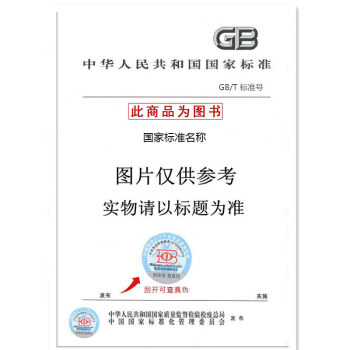
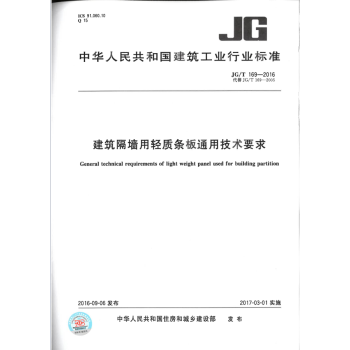
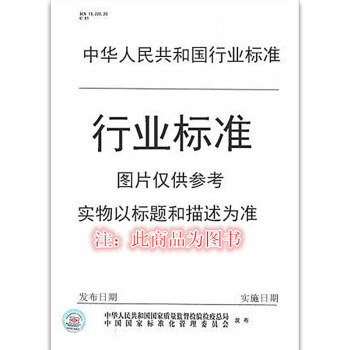
![结构概念和体系 [Structural concepts and systems for architects and engineers] pdf epub mobi 电子书 下载](https://pic.tinynews.org/10060617/c74084f6-a396-4cd4-8a84-7d1d5c9040b2.jpg)
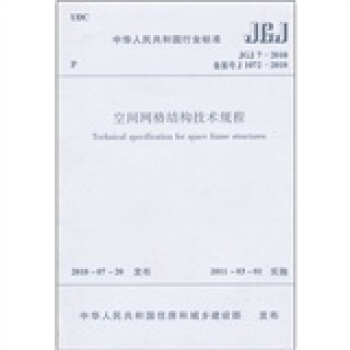
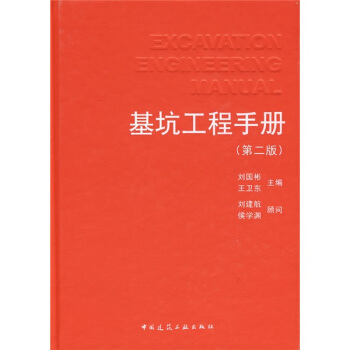


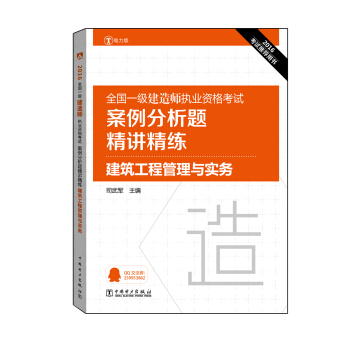


![中华人民共和国国家标准:坡屋面工程技术规范 [Technical Code for Slope Roof Engineering] pdf epub mobi 电子书 下载](https://pic.tinynews.org/10895015/67d87b74-049b-4af8-8539-0b17961928f7.jpg)
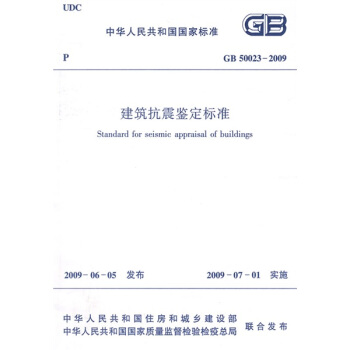


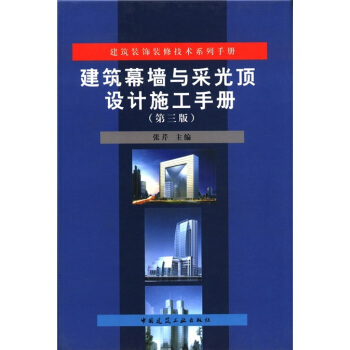
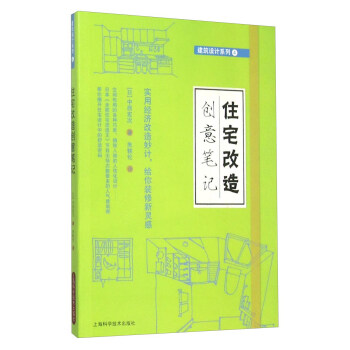

![向日本城市学习:城市设计向东看(第2版) [Learning from the Japanese City: Looking East in U] pdf epub mobi 电子书 下载](https://pic.tinynews.org/12000974/5798e0c4N74d63283.jpg)